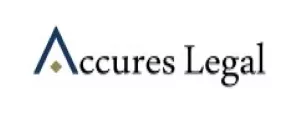Introduction
The National Institutional Ranking Framework (NIRF), introduced by the Ministry of Human Resource Development, is currently becoming an important tool for assessing higher educational infrastructure in India. In the realm of academia, Intellectual Property Rights (IPR) have assumed significant importance as indicators of innovation and research output. This article aims to elucidate the influence of IPR activities, with a particular focus on patents, on the NIRF rankings for 2024.
NIRF Ranking Methodology and IPR
The NIRF uses a systematic technique comprising of five key parameters, namely:
- Teaching, Learning & Resources (TLR)
- Research and Professional Practice (RP)
- Graduation Outcomes (GO)
- Outreach and Inclusivity (OI)
- Perception (PR)
More specifically, 30% of the total ranking calculation is based on Research and Professional Practice (RP) parameter. In this context, IPR activities — patents in particular — take on great importance.The IPR sub-parameters, allocated 15 marks out of 100 within the RP category, is further categorized into:
- IPG (Patents Granted): 10 marks
- IPP (Patents Published): 5 marks
The formula for calculating the IPR score is:
IPR = IPG + IPP Where: IPG = 10 × f(PG) and IPP = 5 × f(PP)
PG represents the number of patents granted, while PP denotes the number of patents published over the preceding three years.
Impact of IPR on University Rankings
It should be noted that the inclusion of IPR in NIRF rankings points towards an ever-growing recognition of the importance of intellectual property as a reliable metric of an institution's excellence. In this context, patents can be seen as direct evidence of the originality of a university's research and its potential value. The activities classified as IPR across various institutions directly aid the improvement of their ranking through:
- Qualitative and quantitative influence of Patents: It includes both, the direct quantitative impact and the qualitative impact of patents on an institution's RP score.
- Commercialization of IP: The successful marketing and transfer of an institution's research output should be seen as a boost to its achievement of the same effect.
- Partnerships and Collaborations: IPR also allow for the establishment of multiple types of partnerships which significantly expand the capabilities of institutions and allow them to position themselves as valuable to industries.
Challenges and Future Directions
| Challenges | Future Directions |
|---|---|
| Lack of awareness and infrastructure | Develop comprehensive IPR policies, allocate separate budget for IPR infrastructure, establish dedicated IPR offices, and conduct regular IPR training workshops for better awareness |
| Resource constraints | Secure specific funding from government and industry partners for IPR activities and pursue active industry-academia partnerships to leverage commercial opportunities. |
| Policy and procedural hurdles | Implement efficient systems for managing and licensing patents. |
| Limited industry collaboration | Reward faculty and students for successful patent filings and commercialization. |
Case Studies: Leading Institutions
A glance at the performance of a few top-ranked institutions in the NIRF 2024 rankings reflects a robust positive correlation between high overall scores and strong IPR performance:
- Indian Institute of Technology (IIT) Madras: Ranked first overall with a score of 14 out of 15 in the IPR sub-parameter within the engineering stream.
- Indian Institute of Science (IISc) Bangalore and IIT Bombay: Observed to have filed substantial patent portfolios along with their high-quality research work in the area of innovation.
Contrastingly, institutions with lower IPR scores generally ranked lower:
- Jawaharlal Nehru Technology University: Scored 0.25 out of 15 in the IPR sub-parameter, correlating with its 88th rank in the engineering category.
- Madan Mohan Malviya University of Technology and Indraprastha Institute of Information Technology: Both scored 0.25 out of 15 in the IPR sub-parameter, corresponding to their 84th and 85th ranks respectively.
Conclusion
IPR metrics in the NIRF rankings portray how important it is to measure institutional success through the lens of intellectual property. Leading universities have a strong IPR portfolio that can accelerate their rankings. However, many institutions do not have enough resources and lack awareness to develop effective IPR strategies. Universities need to develop IPR policies, dedicate resources, and build strong industry linkages for better NIRF ranking in the future. Also, the right environment has to be created for IPR with policymakers at the helm. As the academic scenario changes in India, those institutions which foster innovation and strategic management of IP will become pioneers not only in increasing their own ranking but also in shaping the intellectual destiny of the nation.
The content of this article is intended to provide a general guide to the subject matter. Specialist advice should be sought about your specific circumstances.



